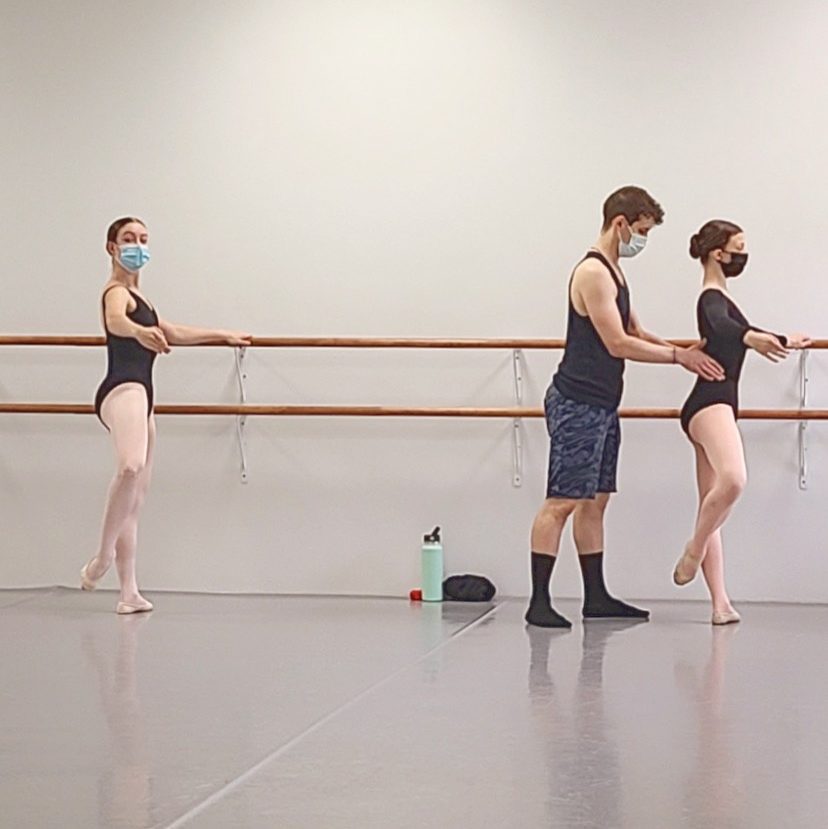
I wasn’t one of those dancers with natural, aesthetically pleasing lines as a teenager. After falling in love with ballet at the ripe age of 15, I spent the next several years working intensely to sculpt a body that somehow carried me into several major ballet companies. I still hold a certain amount of pride for what I accomplished, but at 37 years old, I’m beginning to realize that nothing lasts forever. As I journey further and further away from my performance career into choreography, teaching and directing, I must now learn to embrace the slow deterioration of the technique I worked hard to gain.
Throughout my first few years as a professional dancer, I was convinced I was keeping a dirty secret. I was hired into the corps of Pacific Northwest Ballet (PNB), traditionally known as America’s tall “legs and feet”company, when I was 20 years old. I had average-length legs and moderate ankle flexibility, and rose no higher than 5 feet 10 inches. I thought to myself, “How did I ever sneak into this amazing company?” But I didn’t let this deter me.
After choosing to pursue ballet over Broadway, I was unmoved by the common tunes sung my way. “You don’t have the right feet,” “Your knees look bent,” “Your legs aren’t long enough.” All of those statements motivated me to build a body that PNB would be proud to put onstage. I had plenty of unrealized potential I had only begun tapping into, and I wasn’t afraid to put in the work to realize my capabilities.
Over the years, I have found it challenging when something I work hard for begins to slip through my fingers. Since retiring in my early 30s to focus on choreography and passing on the craft, I have stayed in shape as best I can. This is important, as it allows me to show movement clearly and helps keep injury at bay. Though, as a freelance educator and artistic director of Movement Headquarters Ballet Company, I find myself giving more personal time to my students and company dancers than fine-tuning my technique.
For the above reason, as well as the ticking clock of wear-and-tear, I am beginning to see little cracks break through my armor built of muscle and coordination. The most obvious changes can be found in the loss of rotation in my left hip and the slow wilting of my once-glorious arabesque. Seeing these hard-earned trophies begin to break down, I find solace in the wisdom and maturity I’ve gained since taking my final bow.
As I lose my line, I find that I still somehow continue to grow as a dancer. And, subsequently, anything I learn as a dancer affects what I have to offer as an educator.
First and foremost, I find the older I get, the more forgiving I am of my imperfections. The consummate perfectionist, I was well-practiced in reprimanding myself for what genetics had denied me. Always determined to will myself into a “ballet body,” I would browbeat my physique into submission. Now, as my body ignores common requests, I must offer a gentler approach.
I thank my body for what it has allowed and continues to allow me to do. I also quell my perfectionist thought-process by offering considerations like, “a lower arabesque may be more valuable today than persistent back and hip problems in the years to come.”
While this gentler approach is still somewhat foreign to me, it is beginning to benefit those around me, as well. When working with students struggling to force their bodies beyond their genetic limitations, I endeavor to instill my new practice within them. Now, I teach students to work on changing what they have control over, while offering acceptance and positivity towards the things they can’t safely alter.

Beyond this new mindset, I have also found a greater appreciation in the joy of movement. Yes, to train a professional one must teach the appropriate skills. But there is something to be said about finding happiness, acceptance and release in all movement, whether it is perfectly correct or not.
We are all born dancers. And somewhere along the way, culture, judgment and expectations can derail us. I have frequently caught peers standing shyly on the sidelines of dance floors at clubs. Favorably seen in rehearsed choreography on the stage, it can be difficult for professionals to let go and risk being seen as less than so in unrehearsed movement. Dance training is great for many reasons. But it also has the potential to take the joy out of movement.
For many years, I was highly critical of my dancing. Most joy came from fleeting moments onstage. But as I mature, I find myself loving every moment I get to practice my craft. I laugh as my working leg quivers in adagio. I shrug as I fall out of a triple pirouette. I smile as I huff and puff in jumps because I finally made it through petit allégro. In this stage of my career, where my body is losing more technique than it is gaining, I find myself focusing on a major part of myself that I gave less attention to throughout my search for excellence—my mental health. And as I continue to grow older and wiser, I often find myself overwhelmed with gratitude for being able to continue living a life immersed in dance.




